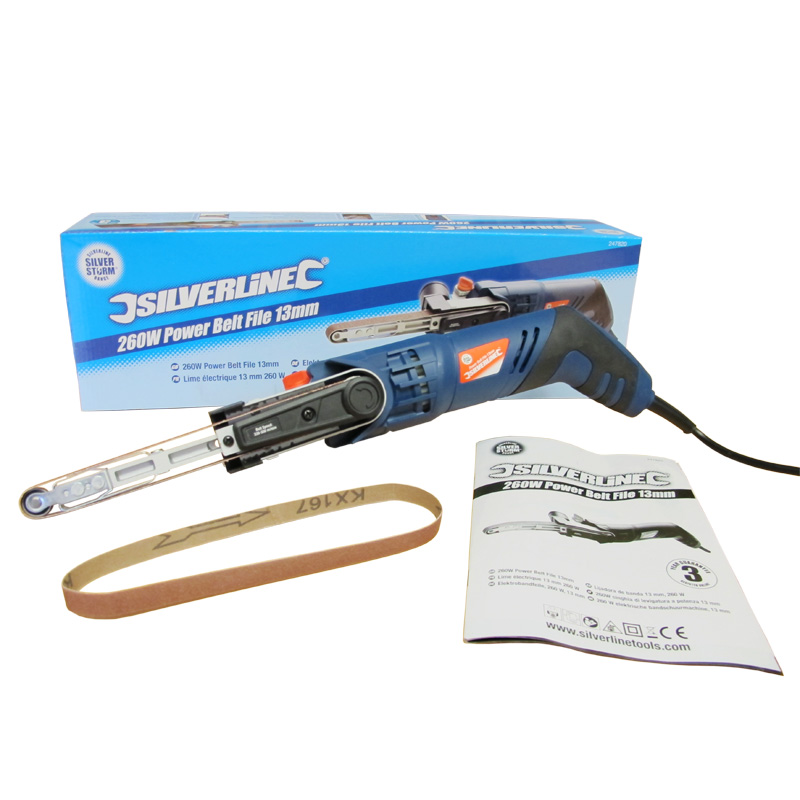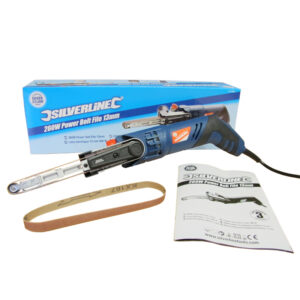Power Files
Silverline power file Product Overview
This power file sander is an ideal tool for the intricate sanding of various materials in difficult-to-access areas. It features a narrow, file-like sanding belt that allows for precise and controlled sanding, while the adjustable file arm angle and variable speed control provide greater versatility for a variety of tasks.
Key Features:
- Narrow, file-like sanding belt for precise and controlled sanding
- Adjustable file arm angle for versatile sanding
- Variable speed control for adapting to different materials and applications
- Quick tensioning system for easy belt changes
Applications:
- Descaling and sanding of welds
- Deburring and edge finishing
- Shaping mortices and joints
- Polishing and smoothing surfaces
- Intricate sanding of hard-to-reach areas
Benefits:
- Precise and controlled sanding for intricate work
- Versatile sanding with adjustable file angle and variable speed control
- Easy belt changes with quick tensioning system
- Ideal for a variety of sanding tasks, including descaling, deburring, shaping, and polishing
Additional Information:
- Powerful motor for effective sanding
- Durable construction for long-lasting use
- Comfortable grip for extended use
- Easy to store and carry
FAQ:
1. What types of materials can the power file sander work with?
The power file sander can be used with a variety of materials, including wood, metal, plastics, and composites.
2. What grits of sanding belts are compatible with the power file sander?
The power file sander is compatible with a variety of grits, from fine to coarse. The specific grit range will depend on the material being sanded and the desired finish.
3. How often should I change the sanding belt?
The frequency of belt changes will depend on the material being sanded and the amount of use. As a general rule, belts should be changed when they are worn out or when the sanding quality begins to deteriorate.









